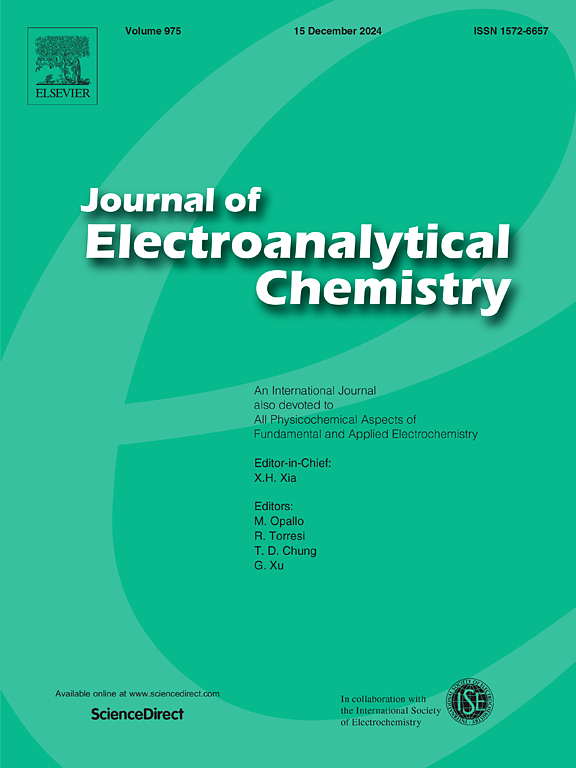Investigation of hydrogen evolution kinetics of metal-doped MoS2 electrocatalysts by exploring the charge transfer coefficients
IF 4.1
3区 化学
Q1 CHEMISTRY, ANALYTICAL
引用次数: 0
Abstract
Charge transfer coefficient (α) is an intrinsic activity parameter of hydrogen evolution reaction (HER), as it deals with the fraction of supplied energy used to increase the HER kinetics. This article investigated the HER kinetics of MoS2, aluminium (Al-MoS2) and tin (Sn-MoS2) doped MoS2 nanostructures by estimating the exact values of α. This article proposes a simple method of the least square curve fitting of the Butler-Volmer equation on the experimentally produced polarization curve of HER to derive α. Since the charge transfer coefficient depends on the current density, in curve fitting, values of α are determined at three different current density regions. The correctness of the estimated α was verified by comparing it with the same derived from Tafel plots of experimental values. Overpotential, Tafel slope, Turnover frequency (TOF), double layer capacitance, electrochemically active surface area (ECSA) and exchange current densities were estimated to confirm the reliability of obtained α values. All electrocatalytic parameters show that Al-MoS2 has excellent HER activity with overpotential: 249 mV at 10 mA/cm2, Tafel slope: 67 mV/Dc, TOF: 0.32 s−1, double layer capacitance: 17 mF/cm2, ECSA: 425/cm2 and Exchange current density: 1.38 mA/cm2. The estimated value of α for Al-MoS2 is 0.89 at the current density region −5 mA/cm2 and − 15 mA/cm2 which exhibit the excellent electrocatalytic activity of the catalyst. Estimation of the exact value of α will help to understand the exact electrocatalytic mechanism of the catalyst.

求助全文
约1分钟内获得全文
求助全文
来源期刊
CiteScore
7.80
自引率
6.70%
发文量
912
审稿时长
2.4 months
期刊介绍:
The Journal of Electroanalytical Chemistry is the foremost international journal devoted to the interdisciplinary subject of electrochemistry in all its aspects, theoretical as well as applied.
Electrochemistry is a wide ranging area that is in a state of continuous evolution. Rather than compiling a long list of topics covered by the Journal, the editors would like to draw particular attention to the key issues of novelty, topicality and quality. Papers should present new and interesting electrochemical science in a way that is accessible to the reader. The presentation and discussion should be at a level that is consistent with the international status of the Journal. Reports describing the application of well-established techniques to problems that are essentially technical will not be accepted. Similarly, papers that report observations but fail to provide adequate interpretation will be rejected by the Editors. Papers dealing with technical electrochemistry should be submitted to other specialist journals unless the authors can show that their work provides substantially new insights into electrochemical processes.

 求助内容:
求助内容: 应助结果提醒方式:
应助结果提醒方式:


